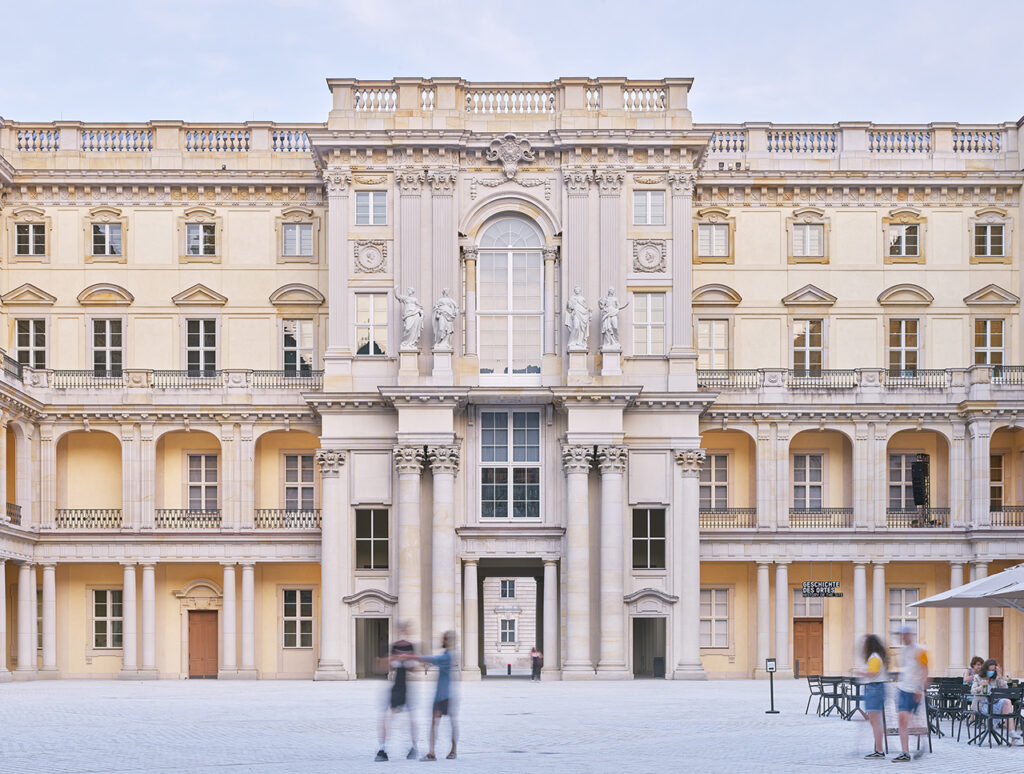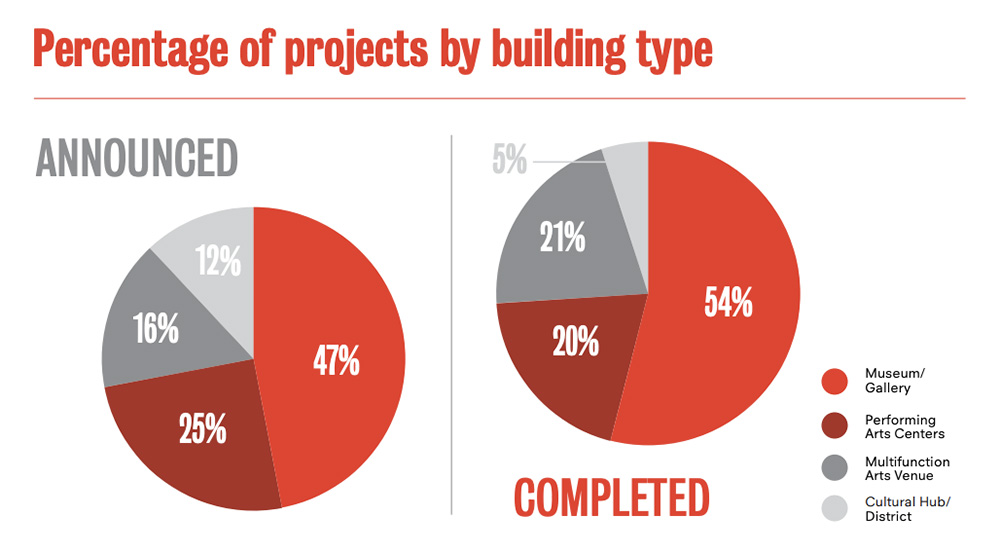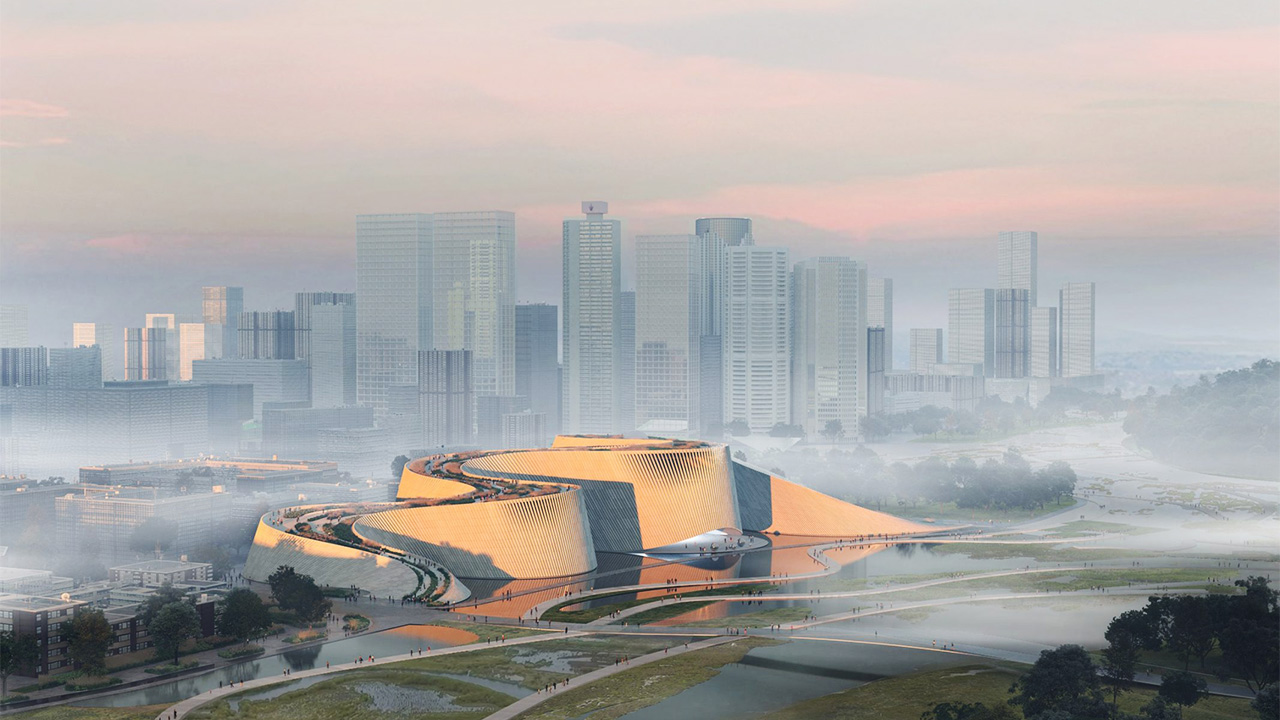2020 proved to be a volatile year for cultural institutions — 95% of global museums temporarily shut down, with many on the brink of permanent closure. But AEA Consulting’s 2020 Cultural Infrastructure Index highlights a positive trend in the chaos: new cultural institutions opened, however slowly.
The cultural consulting firm’s fifth annual report tracked the investment in and development of cultural buildings, specifically “identifying projects with a budget of US$10 million or more that were publicly announced or completed within a calendar year.” Unsurprisingly, the pandemic forced the delays of a number of major openings such as Cairo’s Grand Egyptian Museum, Oslo’s Munch Museum, and the Academy Museum of Motion Pictures in Los Angeles. These postponed openings impacted the figures for completed projects in 2020, which were 30 percent down in volume and 27 percent in value from 2019 numbers.

According to the report, the newly opened Humboldt Forum was 2020’s highest valued realized project, followed by the Suzhou Bay Cultural Center in Suzhou, China, and the expansion of the Museum of Fine Arts Houston, Texas. Image: Humboldt Forum, photographed by Alexander Schippel
Geographically, the report found that of all continents, Asia saw the highest growth, reflecting China’s ongoing museum boom. Conversely, North American and European projects slowed down substantially: compared with the past year, completed projects dipped from 65 to 32 and from 38 to 23 respectively. Houston, Texas topped the list of cities with the highest number of realized developments (three), while Humboldt Forum‘s $825-million price tag made it the highest valued completed project.
Here are two key learnings from the report’s data.
Cultural venue sizes grow, as multifunctional arts venues multiply

Museums made up the majority of announced and completed projects, representing $7 billion of total investment. Image: AEA Consulting
Museums did temporarily shut down in 2020, but it didn’t stop new projects from being developed. AEA Consulting reports that the past year saw 130 project announcements, with 104 being successfully completed, the majority of which (56) were museums and galleries. Despite flagging numbers compared to 2019, the size of announced projects grew by 13 percent, thanks to ambitious builds such as the Changzhou Culture Plaza in China (365,000 square meters).
Of note, the announcements of multifunctional arts venues have picked up, both in terms of volume (up 54 percent) and value (up 132 percent) — a trend that the report notes, “could be indicative of a broader move toward more flexible cultural infrastructure.”
Meet the next cultural capital: Shenzhen

Asia led the number of completed projects in 2020, exceeding North America for the first time, with investment in China hitting $3.3 billion. Image: AEA Consulting
In terms of value and volume, Shenzhen emerged as a leader in cultural development: “30 percent of the total value of announced projects and seven of the top 13 projects by budget,” according to the report, can be located in the Chinese city.
Already recognized as China’s Silicon Valley, Shenzhen is vastly expanding its creative industries, with plans to complete 10 cultural projects — half of which are museums including the Shenzhen Maritime Museum and Shenzhen Natural History Museum — and 10 cultural districts by 2023. These developments join the city’s approximately 50 existing cultural facilities, as reported by AEA, as well as an arts landscape that’s thriving with events like the upcoming DnA Shenzhen.
Such a flourishing is a part of a China-wide cultural explosion that, between 1996 and 2015, has seen the number of Chinese museums triple to some 4,000 buildings, including public museums and government-subsidized institutions. There’s been so much investment in Shenzhen that for the first time, China’s spending ($3.3 billion) has exceeded the United States’ ($1.6 billion). The city, the report concludes, “has the capital and momentum to achieve status as a major new cultural capital.”



